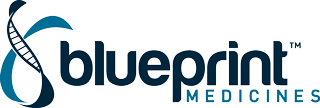Advancing patient care through early and sustained collaboration with rare disease communities
For many common diseases, there is significant evidence documenting their natural history, clinical presentation, signs and symptoms, and real-world impact on people’s daily lives. However, data generated for rare health conditions is typically limited in comparison, and it is important for biopharma enterprises to work closely with clinical and patient communities to address potential gaps in knowledge.
Since Blueprint Medicines’ inception over a decade ago, we have focused on advancing the understanding of the underlying cause of systemic mastocytosis (SM), and improving clinical care for this rare haematologic disorder, which impacts about 40,000 people in Europe.
SM is characterised by the abnormal accumulation of mast cells, a critical component of the immune system. As a result, patients face potentially debilitating symptoms across multiple organ systems, such as skin lesions, diarrhoea, bone pain, fatigue, and anaphylaxis. The effects of SM can be particularly challenging: many patients have limited ability to work or perform daily activities, and they may isolate themselves at home to protect against unpredictable triggers.
For the biopharma industry at-large, I believe early and consistent collaboration with clinical experts and patients is vital to advance medical care, particularly for rare conditions like SM. This collaborative approach has played a key role in supporting our long-term efforts to make a difference in the lives of SM patients and to gradually establish our company as a trusted partner for the SM community.
Understanding the disease burden and impact
For rare conditions, there can be limited understanding of the real-world impacts faced by patients and their families, including how symptoms affect patients’ daily functioning and overall well-being.
To address this challenge, we worked with clinical experts and advocacy groups to conduct the Perceptions Reality and Insights on Systemic Mastocytosis (PRISM) study. This multi-country assessment has underscored the substantial burden of SM among European patients. For example, at the time of diagnosis, healthcare providers (HCPs) reported patients presented with an average of more than 17 symptoms in total, and patients reported taking an average of more than 10 medicines over their lifetime. These results highlight the importance of coordination across multiple specialists to address the diverse needs of patients living with SM.
Additional findings from the PRISM study demonstrate the profound impact symptoms can have on patients’ quality of life, despite the use of different symptom-directed therapies. In the study, 65% of HCPs reported patients’ lives were affected “quite a bit” or “a great deal”, and 58% reported patients lost employment opportunities. Patients also reported significantly lower levels of physical and mental functioning than what has been observed historically in healthy populations. This data reinforces the urgency to diagnose patients and advance treatment beyond traditional therapeutic options.
The PRISM study included a meaningful number of respondents across seven European countries, providing important insights to tailor disease awareness efforts at the local level. In the study, both patients and HCPs were asked about consistent topics, such as time to diagnosis and treatment goals, which means we can explore how perceptions compare between the two groups, providing further insights for the SM community.
Through the PRISM study and related research, we have gathered important learnings about what it is like to live with SM, helping inform the development of new educational resources. For example, the recently introduced patient education portal, Navigating SM, features information based on PRISM study findings, including the diverse range of possible symptoms and the different specialists involved in SM care, among other topics. In the future, we are planning to add stories of people living with SM to help other patients and caregivers realise they are not alone in facing the physical, psychological, and emotional impacts of the disease.
Improving time to diagnosis
Prior to receiving a diagnosis, patients with rare diseases often see many different specialists over multiple years. Because SM involves multiple organ systems and heterogeneous, non-specific symptoms, it can take years to receive a diagnosis. The PRISM study indicated that patients with SM visited an average of 3.8 healthcare providers before the disease was detected, and in 19% of cases, a diagnosis took more than five years.
Working closely with the clinical community, we have taken a comprehensive approach to help address this important issue, including by:
- Raising awareness of hallmark symptoms: While more than 20 symptoms can occur in patients with SM, our HCP disease awareness efforts highlight three hallmark symptoms that often appear in SM patients with unexplained persistence or recurrence – skin lesions, anaphylaxis, and diarrhoea. By focusing on common symptoms upfront, we hope to help a broad range of HCPs determine when to suspect SM, so they can pursue further diagnostic testing for appropriate patients.
- Generating data to identify patient groups at elevated risk of SM: Working with clinicians at medical centres around the world, we are evaluating which patient populations are at increased likelihood of having SM. Recently, our PROSPECTOR study found that patients who met certain pre-specified criteria were 400 times more likely to have the KIT D816V mutation – the primary driver of SM and other clonal mast cell diseases – relative to the general population.
- Educating HCPs on high-sensitivity screening tests: For SM, non-invasive screening tools help clinicians determine who should receive a bone marrow biopsy, which is required for a definitive diagnosis. In one of our clinical trials, we demonstrated that high-sensitivity tests detected the presence of KIT D816V more frequently than standard next-generation sequencing assays. This data supports current clinical guidelines recommending high-sensitivity testing for the KIT D816V mutation as an initial screening tool.
Advancing methods to evaluate treatment response
In rare diseases, companies often need to pioneer clinical development paths and registrational endpoints without well-established precedents.
Early on, we partnered with clinicians and patients to develop disease-specific, patient-reported outcomes (PRO) tools that are being leveraged across clinical trials. Symptom data generated from one of these tools served as the primary basis for multiple regulatory approvals globally. In clinical trials, patients fill out the PRO questionnaires daily, providing a comprehensive dataset on the effects of treatment over time.
The development of PRO tools involves a comprehensive process to address the rigorous standards required to support regulatory approvals. Key steps included:
- Surveying a broad range of patients and clinicians to identify what symptoms are most meaningful to measure
- Ensuring the language used in the questionnaire is easily understood by patients
- Establishing how patient-reported symptom scores correlate with disease severity (e.g., mild, moderate or severe)
- Demonstrating the tool’s ability to detect the effects of a therapeutic intervention
In addition, we have worked with clinicians to establish new criteria for evaluating treatment response in the advanced form of SM. Existing criteria, which have been primarily based on the resolution of organ damage, typically involve assessments by a highly specialised pathologist. A newly developed method – called pure pathological response (PPR) criteria – leverages objective assessments that are used in real-world clinical settings, which may help HCPs incorporate this approach into routine medical care.
In orphan diseases, it may not be feasible to conduct randomised controlled trials with multiple treatment arms. For advanced SM, we generated single-arm trial data on our treatment, as well as real-world evidence from retrospective chart reviews of patients receiving other therapies. This real-world data has provided important context for global regulators and health technology assessment (HTA) authorities in their evaluation of our clinical trial results. The datasets have supported reimbursement agreements across a broad range of European countries to-date.
Enabling access to clinical trials
We are committed to recruiting and supporting diverse clinical trial populations reflecting the real-world epidemiology of the disease.
To help achieve this goal, we are making equity, diversity, and inclusion (ED&I) capabilities a key component of our selection processes for clinical research organisations (CROs) and other third-party partners, as well as trial sites themselves. In addition, we have developed ED&I-specific goals for our cross-functional SM team, so that these objectives cascade down to each team member who touches the programme.
We know that participating in clinical trials can be challenging in many ways, particularly for patients living with debilitating diseases, and so we must constantly strive to support those who take part. For example, we provide comprehensive financial assistance for patients and their care partners to visit clinical trial sites, where permitted based on local regulations.
Fostering community connections
For many rare diseases, advocacy groups have fewer resources and staff than those representing highly prevalent conditions.
Blueprint is committed to supporting advocacy groups’ ongoing efforts to educate, engage and empower patients living with SM. For example, this year we started to host quarterly exchanges with patient group representatives across European countries, where expert speakers outside the field of SM were invited to discuss key topics, such as HCP/patient communications, health literacy, and shared decision-making. The hope is that by bringing patient advocates together around common areas of interest, we can foster education on new ways to support their respective communities, as well as provide a forum where these groups can learn about successful approaches from others.
Across different geographies, connectivity within patient advocate communities has continued to grow over time. For example, since we entered the SM space, more than 20 advocacy groups worldwide have come together to launch the International Mastocytosis and Mast Cell Diseases Awareness Day, which is celebrated annually on October 20th. At Blueprint, we focus on collaborating with patient organisations across borders, as well as tailoring our efforts to address specific local needs. We use a comprehensive approach to working with the advocacy community, providing support for patient groups focused on SM and other mast cell disorders, as well as rare disease organisations that have taken a growing interest in SM.
Working together to change patients’ lives
As a physician, I have seen firsthand the impact of serious medical conditions on patients and their families.
I joined the biopharma industry to bring life-changing therapies to patients, and I believe that we can optimally advance clinical care when we collaborate closely with relevant stakeholders, including medical experts, advocacy groups, patients, and their families.
For more than a decade, Blueprint has been partnering with the SM community to ensure their voices are heard, demonstrating how early and sustained collaboration can improve the scientific understanding, diagnosis and treatment of the disease. For the biopharma industry at-large, I encourage all of us to closely engage the clinical and patient communities throughout our programmes’ lifecycles, from R&D to commercialisation, with the goal of creating a brighter future for patients in need.
About Blueprint Medicines
Blueprint Medicines is a global, fully integrated biopharmaceutical company that aims to invent life-changing medicines. We seek to alleviate human suffering by solving important medical problems in two core focus areas: allergy/inflammation and oncology/haematology. Our approach begins by targeting the root causes of disease, using deep scientific knowledge in our core focus areas and drug discovery expertise across multiple therapeutic modalities. Leveraging our established research, development, commercial capability, and infrastructure, we now aim to significantly scale our impact by advancing a broad pipeline of programmes ranging from early science to clinical trials in mast cell diseases, including chronic urticaria, breast cancer, and other solid tumours.
About the author
Georg Pirmin Meyer, senior vice president, international at Blueprint Medicines, brings a striking breadth of experience and leadership across the biopharmaceutical and medical landscape. Since joining Blueprint Medicines in 2019, Meyer has grown the international business with agility and sustainability in mind, cementing a fit-for-purpose model for the company’s globalisation plans.
Prior to joining Blueprint Medicines, Meyer held emerging leadership roles as the country manager for the German affiliate at Vertex Pharmaceuticals and as functional transformation officer, as well as business unit director & new product planning in Europe and Germany at Amgen. Prior to this, he held various roles in medical affairs and commercial during his tenures at Amgen and Sanofi Spain. Meyer holds a M.D., from The University of Freiburg.
Supercharge your pharma insights: Sign up to pharmaphorum's newsletter for daily updates, weekly roundups, and in-depth analysis across all industry sectors.
Want to go deeper?
Continue your journey with these related reads from across pharmaphorum
Click on either of the images below for more articles from this edition of Deep Dive: Patients & Partnerships 2024

















